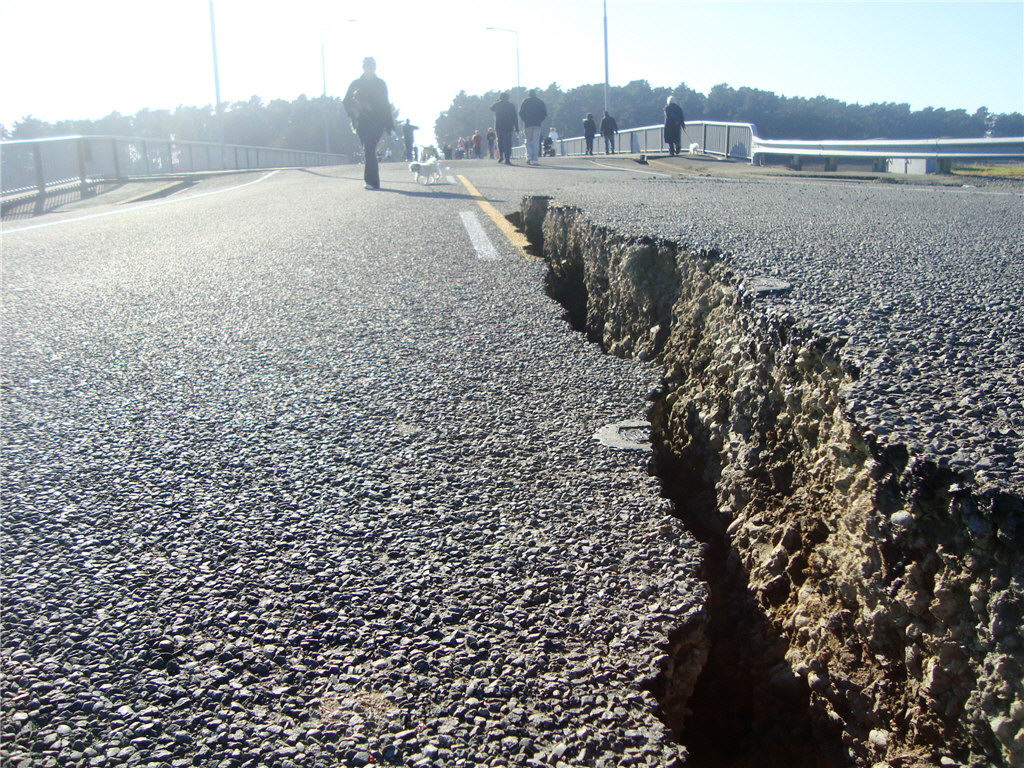
Surface waves do lose energy quickly, so they are not measured at great distances from the focus. Rayleigh waves (left) cause a rolling motion, and Love waves (right) cause the ground to shift from side to side. ( 1) Figure 5.3.4 Surface waves travel along Earth’s surface and have a diminished impact with depth. However, with Raleigh waves, rock particles move in a direction opposite to that of water particles in ocean waves. Rayleigh waves produce an elliptical motion of points on the surface, with longitudinal dilation and compression, like ocean waves. Love waves produce horizontal ground shaking and, ironically from their name, are the most destructive. Two distinctly different waves are created spread out along the surface of the earth until they dissipate. Surface wavesare slower moving seismic wave, and are produced when body waves reach the Earth’s surface. P-waves do travel through the core, but because the waves that enter the core are refracted, there are also P-wave shadow zones. S-waves do not travel through the liquid outer core, so they leave a shadow on Earth’s far side. P waves also have a shadow zone, created from areas that occur due to the pattern of refraction (Figure 5.3.3).įigure 5.3.3 Patterns of seismic wave propagation through Earth’s mantle and core. Because S waves cannot move through a liquid, they are blocked by the liquid outer core, creating a shadow zone on the opposite side of the planet to the earthquake source. This behavior typically happens at the boundaries between the crust, mantle, and core. Seismic waves reflect (bounce), refract (bend), and speed up with depth as they encounter various boundaries and densities within the Earth. Panchuk, K (2018) CC BY 4.0īecause the interior of the Earth is not made of a single, homogenous substance, body waves do not travel uniformly through it. Bottom: S-waves move particles at right angles to the direction of motion. Top: P-waves travel as pulses of compression. Figure 5.3.2 Seismic waves are simulated using a spring and rope attached to a fixed surface. Due to this motion, secondary waves cannot travel through liquids, plasma, or gas. Particles of rock move from side to side during the passage of S waves. Secondary waves travel slower and follow primary waves, propagating as shear waves. Primary waves can travel through both fluids and solids. Particles of rock move forward and back during the passage of the P waves. They move through the rock via compression, very much like sound waves move through the air. Primary waves are the fastest seismic waves. Body waves include primary waves (P waves) and secondary waves (S waves). When seismic energy is released, the first waves to propagate out are body waves that pass through the planet’s interior. Seismic waves are an expression of the elastic energy released after an earthquake that travel either along the Earth’s surface ( surface waves) or throughout the Earth’s interior ( body waves).

( 1) Figure 5.3.1 Focus and Epicenter by the Utah Geologic Survey, Public Domain.

The focus is the point along the fault plane from which the seismic waves spread outward. The epicenter is also the location that most news reports give because it is the center of the area where people are affected. The epicenter is the location on the Earth’s surface vertically above the point of rupture (focus). More shaking is usually the result of more seismic energy released. The larger the displacement and the further it propagates, the more significant the seismic waves and ground shaking. Notice that the location of the fault scarp may be a distance from the epicenter. The displacement produces shock waves, creating seismic waves. From the focus, the displacement propagates up, down, and laterally along the fault plane. The focus is always at some depth below the ground surface in the crust, and not at the surface, as shows in Figure 5.3.1.

The point of initial breaking or rupturing, where the displacement of rocks occurs along the rupture surface, is called the focus.


 0 kommentar(er)
0 kommentar(er)
